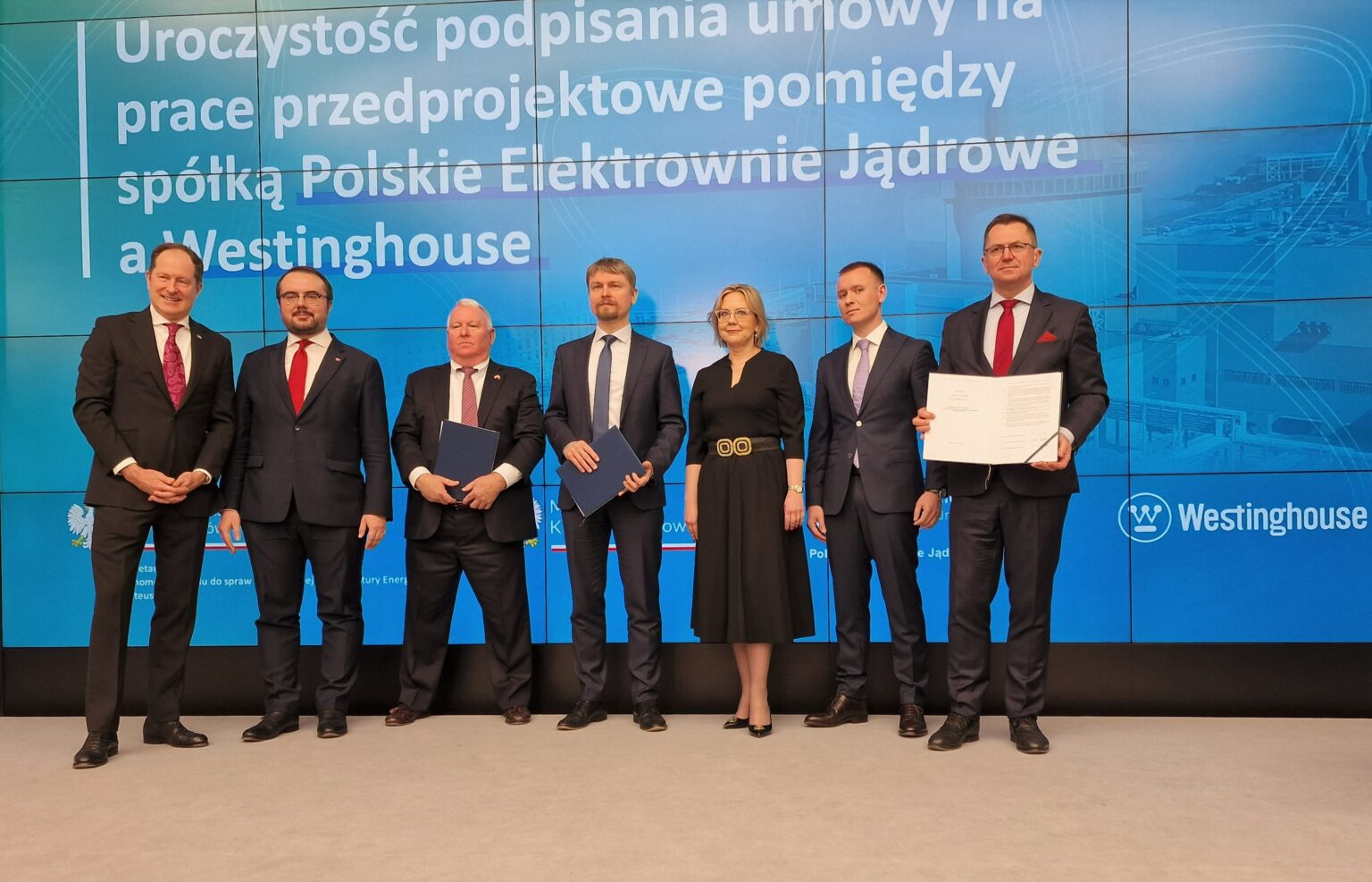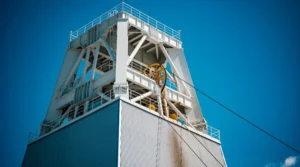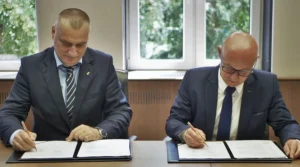What goes on in Poland on the 23rd of February.
PEJ and WEC sign a new deal, but no financing model yet
Polish Nuclear Power Plants (PEJ), the future nuclear operator in Poland, as well as the American Westinghouse (WEC) have signed a pre-design agreement that precedes the financial contract. This means the stakeholders will be preparing the project and working on the financing model at the same time.
Originally PEJ and WEC were supposed to sign a design agreement that would detail the cooperation when it comes to the construction of Poland’s first NPP in Lubiatowo-Kopalino. However, on February 22, a pre-design agreement was signed, which makes it possible to take a step forward despite no deal on bankrolling the project. This contract describes the safety standards to be applied at this particular location, and is intended to summarize the necessary investments to adapt Westinghouse’s AP1000 technology. It will also allow allow for preparing an initial estimate of the project cost. The CEO of PEJ Tomasz Stępień, told reporters that the estimates that have emerged in the media were still valid. A nuclear power plant in Pomerania may cost about PLN 100 billion, but these costs will depend on the final financing model, which has not yet been created.
Senate wants to change the new distance rule to 500 meters
The Senate held a debate about the Sejm’s distance bill for onshore wind. The senators want to reduce the minimum distance between a turbine and buildings from 700 to 500 meters, which would greatly expand the scope of the coming investments across the country.
Following debates the joint Senate committees adopted amendments. The Senators want to reduce the distance between wind turbines and buildings to 500 meters. „The compromise with the government was that the social side agreed to a distance of 500 meters. During the discussions at the Sejm, this was increased to 700 meters. In the case of the Silesian Voivodeship, this means that 51 percent less land will be available for the construction of wind farms. In the case of the Mazovian voivodship that figure reaches 58 percent,” said opposition senator Stanisław Gawłowski.
The second amendments is about restoring the status quo that stemmed from the spatial development plans, which had been adopted by municipalities prior to 2016, when the 10H rule was introduced. „Municipalities have spent about PLN 100 million on zoning plans that have created the possibility of building wind farms. The average time to prepare such a plan for wind turbines is about two years, sometimes even four years. Add to that the waiting time for the environmental decision, the connection conditions, the order, the technical design. Therefore, seven years is the minimum for the implementation of the wind project,” he calculated. He noted that in this regard, it would be difficult for Poland to achieve the goals set out in the Fit for 55 package. In addition, the REPowerEU program allows financing of investments in RES from EU funds if the installations are launched by 2030, therefore, in the current legal order, Poland may have a problem with this.









